Although we have Pope Francis’ best interests at heart, his pontificate will come to an end one day. The resignation or even death of the Pope is inevitable. But what happens when a pope dies or steps down from office?
The Pope dies: Sede Vacante
After the pope dies, the period of sede vacante (or sedis vacatio, Latin for “the chair is empty”) begins, the span of time between the death of a pope and the election of the new pope.
Update: Pope Benedict XVI died on Dec. 31, 2022. Because he was ’emeritus pope’ and not the reigning pope, there is no sede vacante.
This period can be long (the record dates from the 13th century when the period lasted almost 3 years), but has averaged three weeks in the last hundred years.
Hope: The Autobiography
By Pope Francis
New York Times bestseller
First autobiography by a Pope
A vivid memory…
Get offer at Amazon.comThe interregnum between John Paul II and Benedict XVI lasted 17 days. Since the conclave can actually only last a maximum of 15 days and the conclave must begin no later than 20 days after the pope’s death, the sede vacante cannot last longer than 35 days.

Two Popes in the Vatican
The sede vacante can theoretically begin even if the pope steps down. The most recent example occurred in 2013 when Benedict XVI stepped down. The retired pope lived in the Vatican lighthearted. So, for some 10 years there were two popes in the Vatican, an unique situation. There is a sympathetic book and movie about this rather unusual situation: ‘The two Popes’.
During the sede vacante, almost all cardinals lose their curial appointment. The secretary of state, the number two of the Holy See, also resigns from office. But his two adjutants do stay on: the secretary for foreign affairs and the so called sostituto, who deals with the day-to-day affairs of the Vatican.
Camerlengo
During this period, the Camerlengo, as a sort of interim manager, fulfills the most important role in terms of organizing the funeral and the conclave. His task is also highly ceremonial.
We also learned about the role of the camerlengo from the film ‘Angels & Demons’. Ewan McGregor plays a rather (too) young camerlengo. Read more about it in our article on the Rome and Vatican locations in Angels & Demons.
It is the Camerlengo who informs the vicar general of the diocese of Rome of the death. The latter passes on the news to the faithful. Then the rest of the cardinals are informed. In the days of the expensive telegram, no words were wasted. “The pope is dead. Come at once. Villot”, wrote the camerlengo, the Frenchman Jean Villot, after the death of Paul VI (1978).
The role of the camerlengo is not unlimited. The most necessary decisions are made by the joint cardinals who meet daily in assembly, in the so-called general congregation.
Cardinals in Rome
Each day after the pope’s death (or stepping down) more cardinals reach Rome and each day the size of the general congregation increases. At the first meeting, each participant is given a copy of the apostolic constitution “Universi dominici gregis” from 1996, with the most recent rules on the sede vacante. They take an oath, laying a hand on the Gospel, swearing to abide by the rules.
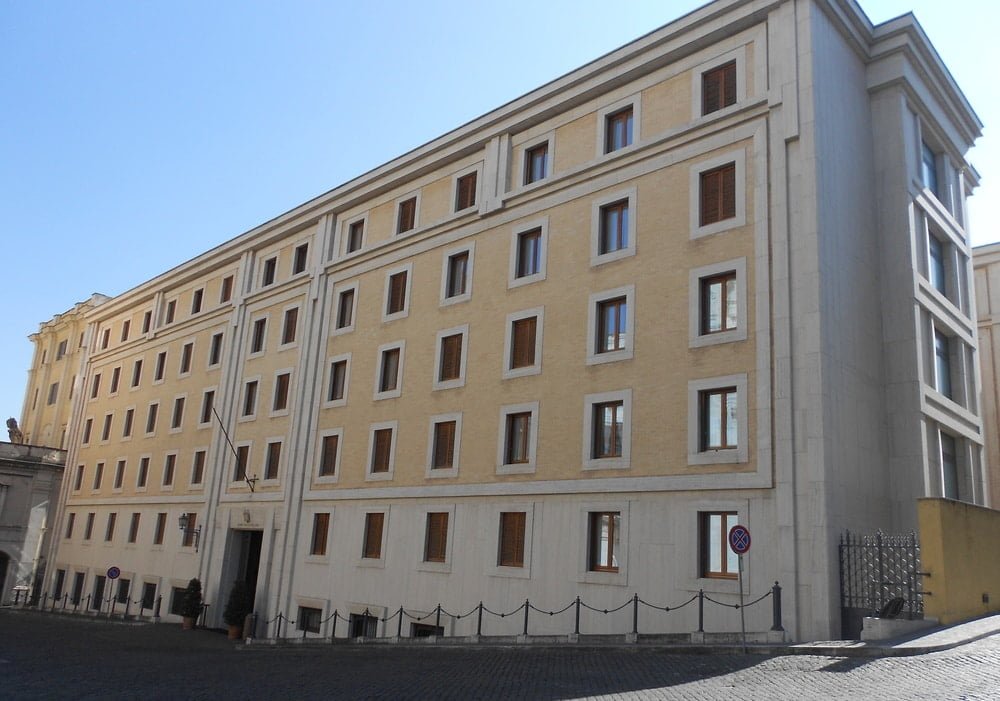
In addition to the general congregation, the special congregation meets to work out some issues in more detail, such as the room allotment for cardinals in the Domus Sanctae Martae in Vatican City, where elective cardinals must stay during conclave. I call this the Conclave Hotel, a rather austure accommodation.
Death of the pope: funeral and mourning
In 2005, no fewer than eight million people came to say goodbye to the Pope. For this, St. Peter’s remained open day and night. The funeral has taken place in St. Peter’s Square (formerly inside the basilica) since 1978. The funeral mass of John Paul II lasted almost three hours.
Death of John Paul II
At the funeral of Paul VI, 104 of 128 cardinals were present. When John Paul II passed away 164 of 183 came to Rome. In 2005, dozens of heads of state also attended the ceremony. The pope would surely have noted with satisfaction that at his funeral ceremony many of the most important religious leaders were present, such as the Eastern Orthodox Patriarch. Also unprecedented was the fact that virtually the entire world (with China as a notable but unsurprising absentee) had sent their highest delegations.
Seven kings and queens, 46 presidents, and 17 prime ministers had traveled to pay their last respects to this pope. Within handshake distance were the archenemies George Bush and Iranian President Mohammed Khatami, the Israeli President and the Syrian leader.

An additional 250,000 people had gathered in and around St. Peter’s Square. Many others followed the Mass on mega-screens set up elsewhere in the city. Never before in Rome’s more than 2,750-year history have so many people been in the Italian capital at the same time.
At funeral masses in St. Peter’s Square, the bier is placed in front of an outside altar. On the coffin are the Gospels, a custom introduced by Paul VI. Next to the coffin is the Paschal candle as a sign of the resurrection and eternal life.
After mass, the bier is carried into the basilica. The popes of the last 40 years have favored simplicity. Pope John Paul II, following Paul VI, chose a cypress wood coffin, which was put in a zinc casing. Over it went a coffin of walnut. Before the triple coffin is closed, the deceased is given a veil over his face. With the body are put bishop’s miter, all the commemorative medals issued during the pontificate and a notarized document containing the pope’s brief life history. A simple marble slab is placed on the grave with a simple epitaph. John Paul was the 148th pope to be buried in St. Peter’s. Not all popes are buried in St. Peter’s.
After the funeral, the novemdiales begin, That is the period of mourning asts nine days, as the word (‘novem’ = nine and ‘diales’ = day) indicates. After these nine days, the conclave normally begins.
Conclave
From the year 1059, the choice of pope has been reserved to the cardinals. Since it was a cardinals’ affair, the choice did not get any easier. Elections could take a very long time. The climax was the sede vacante after the death of Clement IV in 1268, when the conclave met in Viterbo, in the place where the pope had died. None of the eighteen cardinals wanted to give in to each other. To urge them to hurry, the podestà (kind of mayor) of Viterbo had the roof removed and provided only water, bread and wine. The cardinals threatened to leave Viterbo and never return, whereupon the authorities put the roof back on.
Also read: about Viterbo (north of Rome) as a place where conclaves were also held
The new pope was elected in 1271 and assumed the name Gregory X. Three years later he introduced the conclave. That word comes from medieval Latin, in which the word clavis (key) is recognizable, meaning in a room locked with a key. By this is meant that during the papal election no one is allowed to enter and leave the room, that from that moment on was called ‘conclave’. In the 13th century food was only allowed to be offered through a small cell opening. After three days the cardinals were given only one meal a day, after eight days only water and bread.
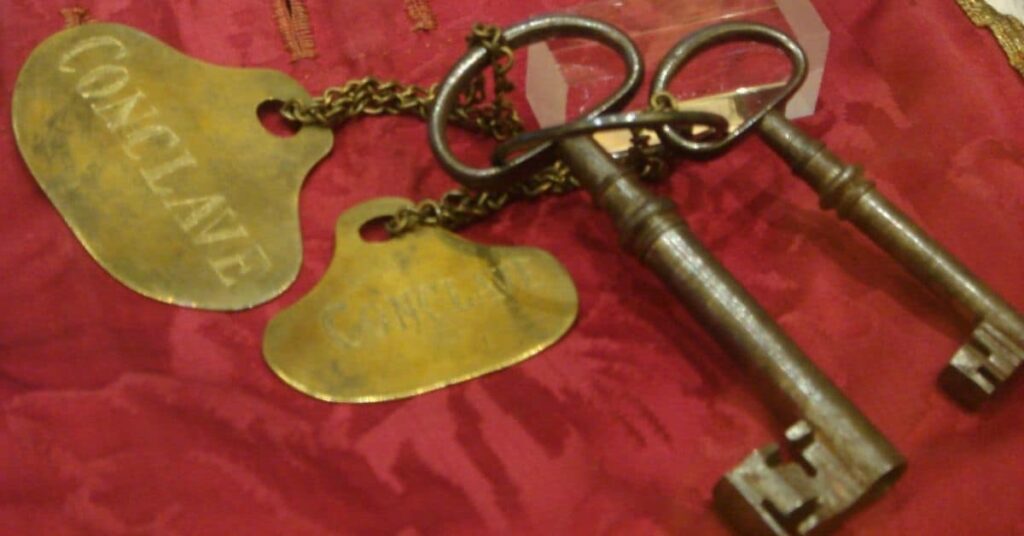
But the strict conclave regime went awry over time. In 1304, the cardinals not came to conclave alone, but took their physician, confessor, and barber with them. The strict diet of 1274 remained, but the cardinals had food brought secretly by relatives. The cardinals even had wooden huts made in the election area to prepare for winter. Only in June the following year was a new pope elected.
Today, the conclave rules are impossible to manipulate, even if they are still broadly similar to the conclave rules of more than seven centuries ago. The differences include that the conclave is held in a defined place, the Sistine Chapel. The cardinals stay all overnight in a kind of hotel (but only since 2005). Only cardinals younger than 80 have the right to elect the pope.
Secrecy remains an important issue. There must be no communication with the outside world. In the early days of modern communication, it was sufficient to pull the plug on the telephone. There is a black and white photograph in which you can see a guardian carefully watching five bakelite telephones.
In today’s age of mobile telephony, the nternet and (hidden) microscopic devices, the code of secrecy is a bit harder to enforce. The media obviously likes to give his audience inside information and to tip off the top candidates. This is in Italy referred to as the papatoto: drawing up the top contenders. Promising candidates, the so-called papabili, are pushed forward or deliberately remain in the shadows.
Also read: about the 8 cardinals who stand a chance of becoming the next pope would a conclave be held now
For example, John Paul II had died only one day or Dionigi Tettamanzi, the archbishop of Milan, held a triumphant mass in his diocese. He waved to the faithful like a pop star. Some scanned “Tettamanzi pope!” The press and betting shops also gave him good odds. Such things are often deadly. Tettamanzi probably received only two votes in the first round of voting in 2005 -possibly including one from himself. Ancient Roman wisdom is inexorable: whoever enters the conclave as pope (as superfavorite) comes out as cardinal.
The conclave meets fifteen to twenty days after the pope’s death. That period is as long as it takes for the funeral and novemdiales to take place, but also to notify the cardinals who live far away and allow them to come to Rome.
This was often insufficient before the invention of the airplane. Cardinals from the United States have participated in the conclave only since 1958. Previous editions they missed because the boat would take too long.
First Day of Conclave
The first day of conclave begins with the Mass “Pro eligendo papa” (“For the Pope’s Choice”). The cardinals invoke the Holy Spirit by singing the hymn “Veni creator” (“Come Creator”). The participants are convinced that it is the Holy Spirit who inspires the Pope’s choice to the electorate. But cardinals are also very realistic, often saying that the spirit “writes straight to crooked rules,” or that his ways are inscrutable.
In the Sistine Chapel, cardinals take an oath first collectively and then personally (“I promise and swear…”). In short, they swear to abide by the rules of conclave. Then the master of ceremonies utters the words: “Extra omnes” (“everyone out”). Only the cardinals (younger than 80 years) remain in the chapel plus a few others who have an indispensable function. Then the conclave can start.
On the first day, one vote is taken. The following days there are two rounds of voting in the morning and two in the afternoon. The voting procedure is worked out in detail. First the cardinals chose among them the three ballot takers, who will count the votes, three revisors, who will check the ballot takers, and three infirmarii (who will collect the votes of the cardinals who are too ill to vote – happens rarely).
These nine cardinals are chosen by lot by the youngest cardinal-deacon. The last non-cardinals, such as the master of ceremonies (if he is not a cardinal) and the secretary of the College of Cardinals are asked to leave the Sistine Chapel now. Then the key goes into the lock permanently (during the vote, however, the infirmarii have the right to go in and out of the chapel to allow any bedridden cardinals to vote).
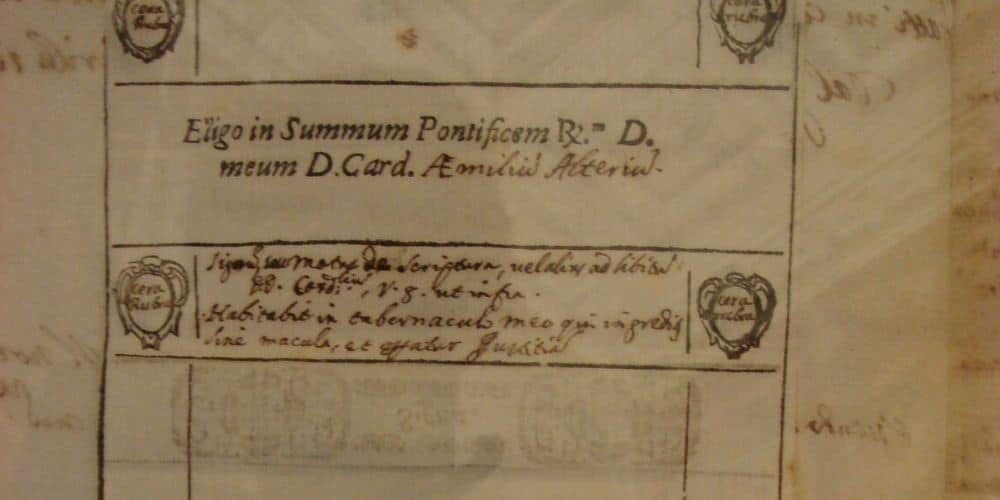
All cardinals in the chapel receive two or three ballots. On the rectangular ballot is printed “Eligo in summum pontificem” (“I choose as supreme pontifex”) and below that a continuous line on which the cardinal writes the name of his choice. He folds the bill inward and walks with the bill clearly visible to his colleagues to the altar that stands against Michelangelo’s fresco of the Last Judgment.
The ballot is placed on a gilded disc. The disc is then tilted so that the ballot falls into a deep oval bowl of gold hardware. This is the ballot box. When all the votes have been cast, the bowl is covered with a lid and shaken. Then the ballots are counted. If the number of ballots does not match the number of cardinals entitled to vote, the election is immediately declared invalid.
If the number is correct the counting can begin. The first ballot taker opens the ticket and writes down the name. The second accepts the ballot and also writes down the name. The third reads the name written on the ballot aloud. Then he sticks a needle and thread through the bill (exactly through the word ‘eligo’). The revisors check the procedure and the vote. The ballots that are threaded together plus all the paper on which the cardinals have made notes and which is taken are put into the stove.
Black smoke
The stove is on the other side of the Sistine Chapel, and the stove pipe goes through a window high up in the chapel, makes a kink and emerges above the roof. Only during conclave does a pipe protrude from the roof. The idea is that the assembled people in St. Peter’s Square can “read” the smoke. If the cardinals haven’t settle things, the camerlengo burns all the paper. From the chimney comes black smoke as a sign that there is no new pope yet.
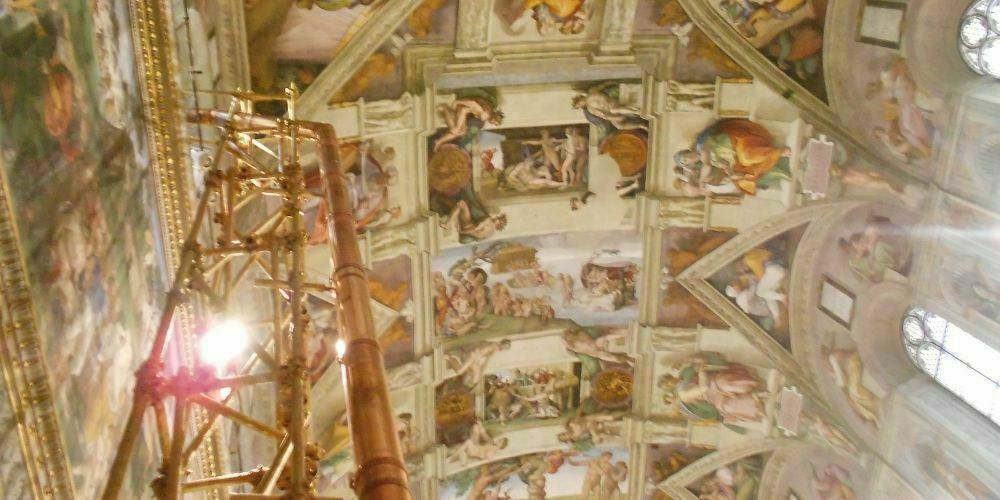
A maximum of 4 rounds of voting are held each day (except the first day). After the fourth day of voting (i.e., after thirteen ballots), a day of rest is inserted, intended to reach a result through prayer and deliberation. This is followed by seven rounds of voting and a day of rest each time until, after fourteen days, a new election key is used.
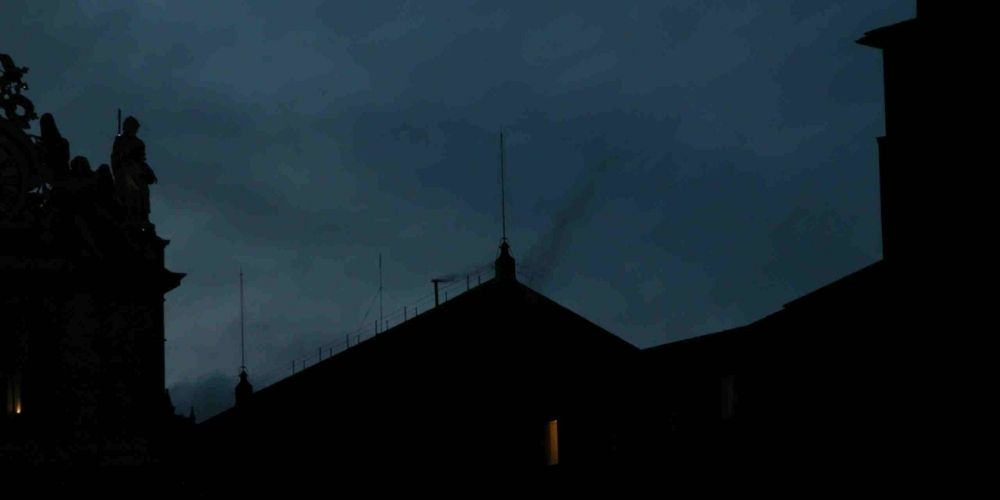
White smoke
To become pope one needs a two-thirds majority. That result is achieved fairly quickly. The (10) conclaves of the twentieth and twenty-first centuries lasted an average of 3.5 days or over seven balllot votes. Benedict XVI was even elected in almost record time: two days and four ballots (the fastest was Pius XII in 1939: three ballots). Francis won in five rounds.
If a candidate has the required number of cardinals behind him, the vice-dean must ask him if he accepts the election as summum pontifex. “Accepto,” is the answer usually. “What do you want to be called?” is the next question. Popes in most cases take on a new name, much like a monk entering an order. This custom seems to have begun with John II (533-535) who found his proper name a bit too pagan (Mercury, god of commerce). Bergoglio chose Francis, because of the saint with the same name from Assisi.
Then the new pope is taken to what is called the weeping room, a side room next to the Sistine Chapel. It is so named because after all the tension the new pope can let his emotions run free. In the crying room he is given his pontifical clothing.
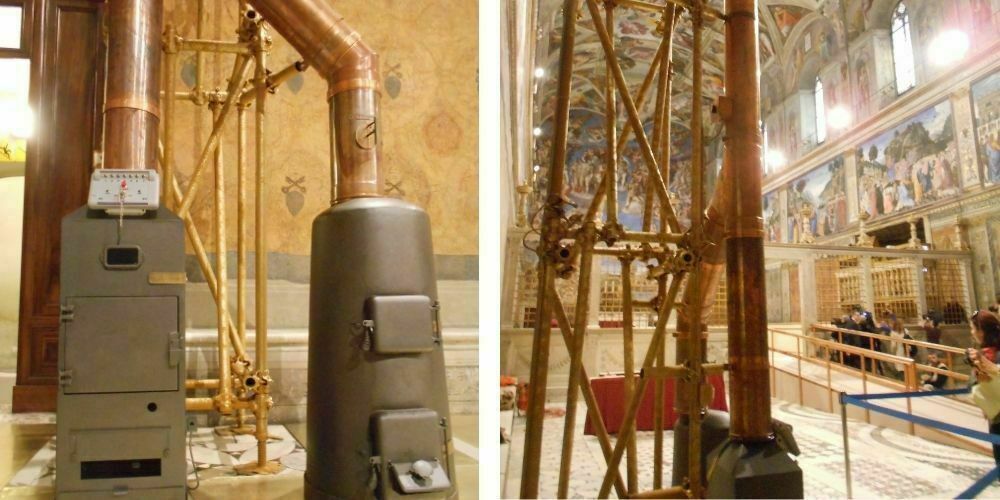
Now the paper from the last round of voting goes into the oven, but a chemical agent is added to it, causing white smoke to come out of the chimney. In 2005, Styrofoam was experimented with for the first time, incidentally with little success as the chapel became ‘black’ with smoke. In the past, white smoke was obtained by adding dry straw. The white smoke is the sign that a new pope has been elected, and that the conclave has come to an end. Now, two different stoves are used, one for producing white smoke, the other for black.
Habemus papam
Just a quick interlude: A likeable film about the conclave was made by the famous Italian director Nanni Moretti. ‘Habemus papam’ is the appropriate title.
In both 1978 and 2005, things in the Sixtine Chapel didn’t go quite right with the smoke. In St. Peter’s Square, the smoke signals were literally mixed, gray in other words. It helped that in 2005 the bells were also ringing – a novelty – as a sign of the positive outcome. Just under an hour later (forty minutes in 2005, 60 minutes in 2013), the new pope was announced.
The ceremony takes place on the central balcony of St. Peter’s. Red curtain cloth is pushed aside. The two balcony doors open and the protodecan comes out. “Annuntio vobis gaudium magnum; habemus Papam,” he says (“I proclaim to you a great joy: we have a pope”). “Eminentissimum ac Reverendissimum Dominum (“and so is His Eminence the Highly Venerable Lord”), “Dominum (first name) Sanctae Romanae Ecclesiae Cardinalem (surname).” “Qui sibi nomen imposuit (name)” (“Who has taken the name…”) .
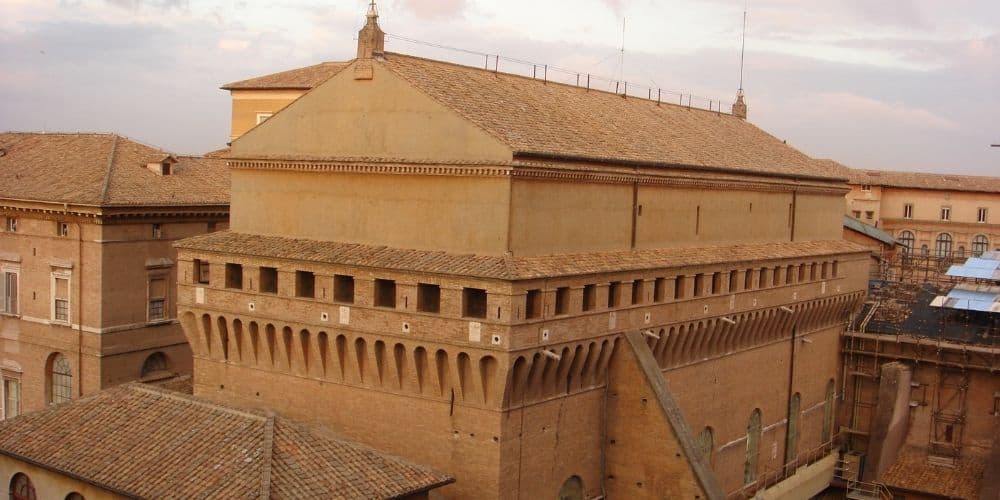
Then the new pope steps forward onto the balcony of St. Peter’s. He wears pontifical white with a red shouldered robe over his shoulders. Around his neck is an embroidered stole. Then the new pope utters his first words. The first appearance of the Pole John Paul II was exemplary when, with great sensitivity to appease the mainly Roman crowd, he said, “I come from far away (…) verbalize me when I moke mistakes in your… our language.” The grammatical error in this sentence amplified the effect of the message.
Unique event
The conclave is a unique event because it takes place so infrequently (ten times between 1903 and 2013) and especially because the conclave has special traditions and ceremonies, such as the “white smoke,” the “habemus papam” that the ‘disenchanted’ West no longer knows, but actually loves. It is a ceremony with such a high theatrical content that many a choreographer or director will look at it with envy.
The new pope
About a week after the election of the Pope, the new pontifex is installed, as it sounds rather clinical. They don’t call this ‘intronization’, as of a monarch on his throne, anymore. This custom has been abolished in 1978, due to the abolition of the use of the tiaria (the papal hat) and all sorts of ‘regal’ ceremonies, such as carrying the pope and waving peacock feathers.
Key moments during the “Mass for the Commencement of the Petrine Office,” as the service is officially called, are the placing of the pallium around the shoulders and the taking on of the fisherman’s ring. The pallium, a kind of stole with small black crosses, stands for the union of the bishop of Rome with the other bishops.
The new pope then begins his pontificate.
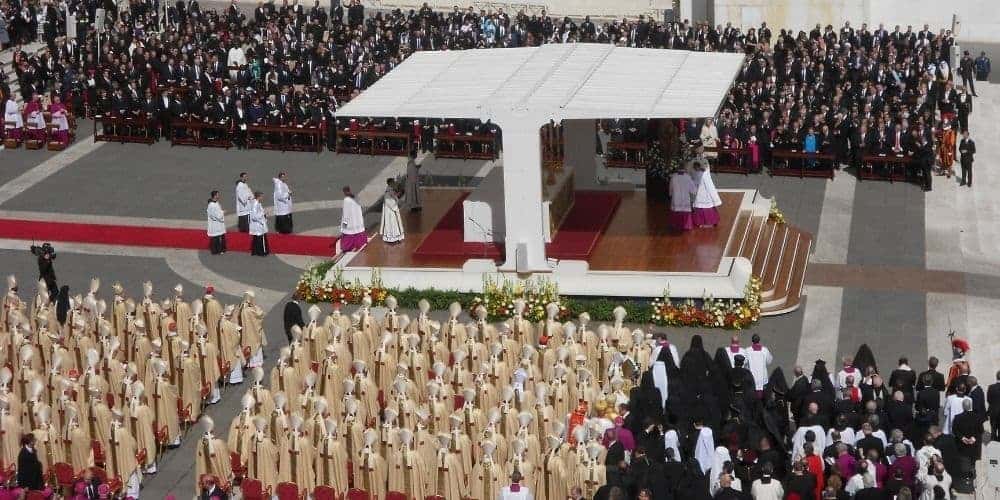

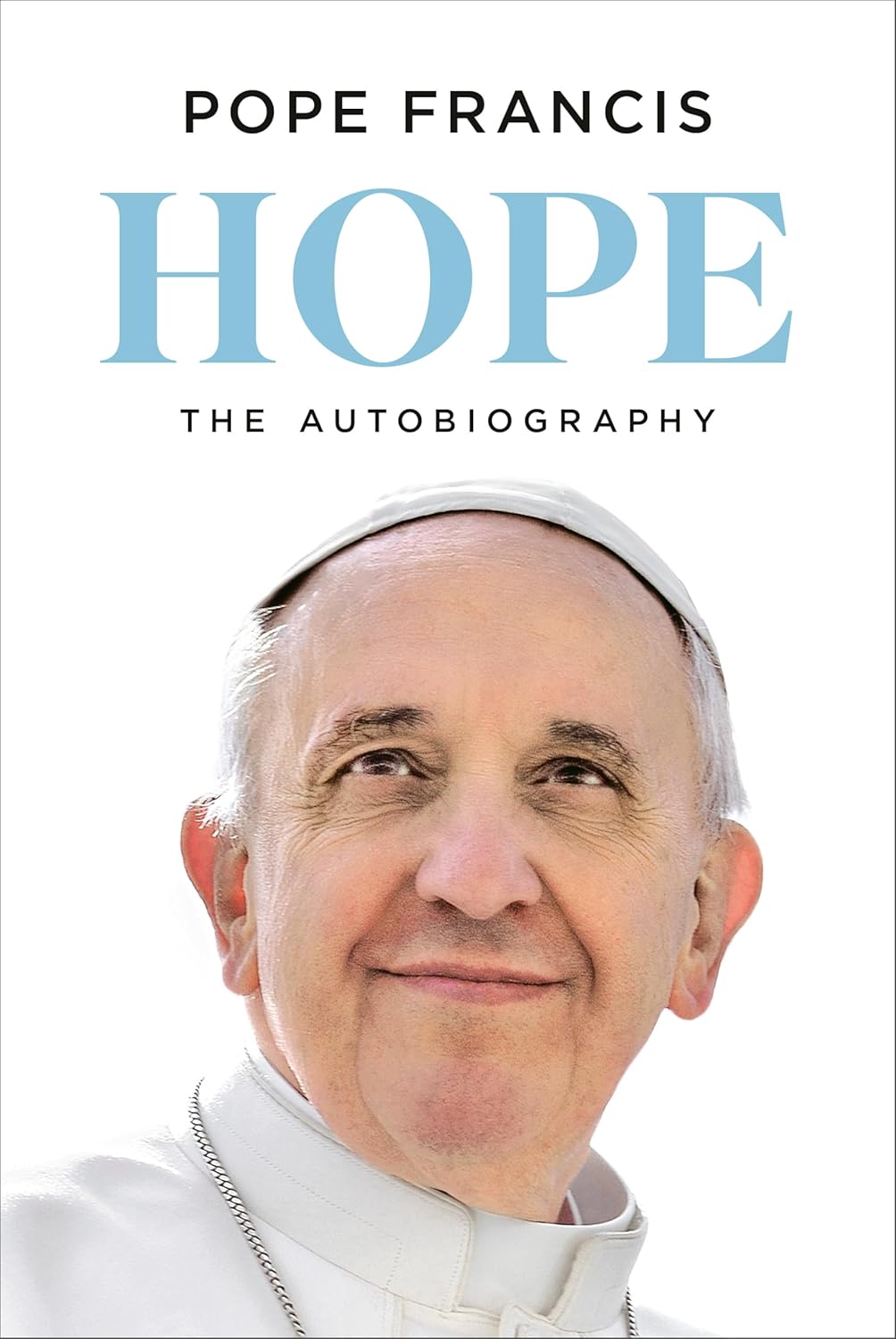
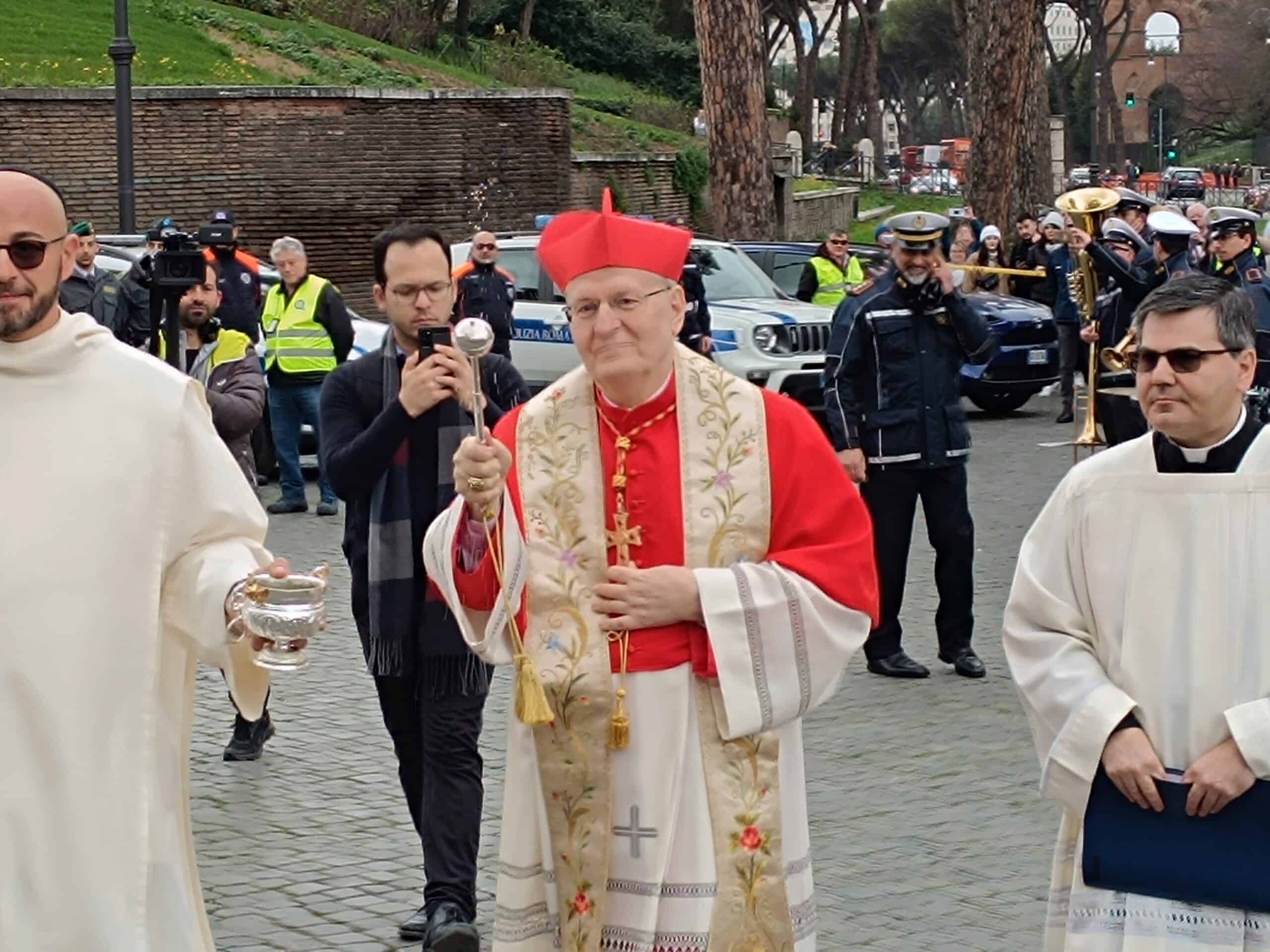
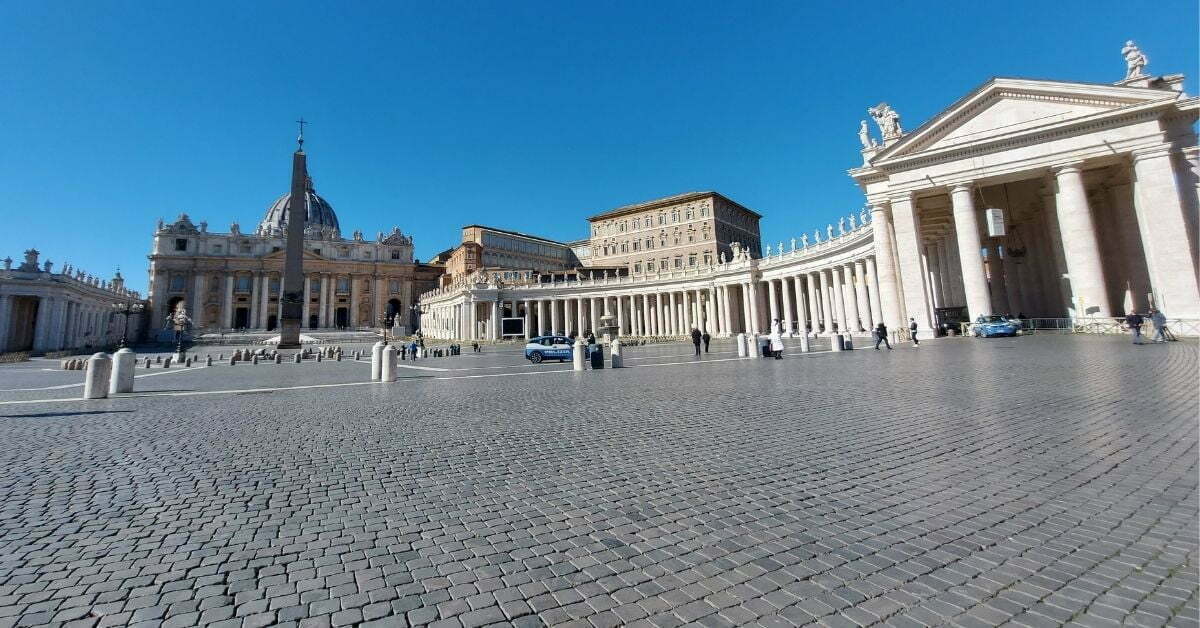
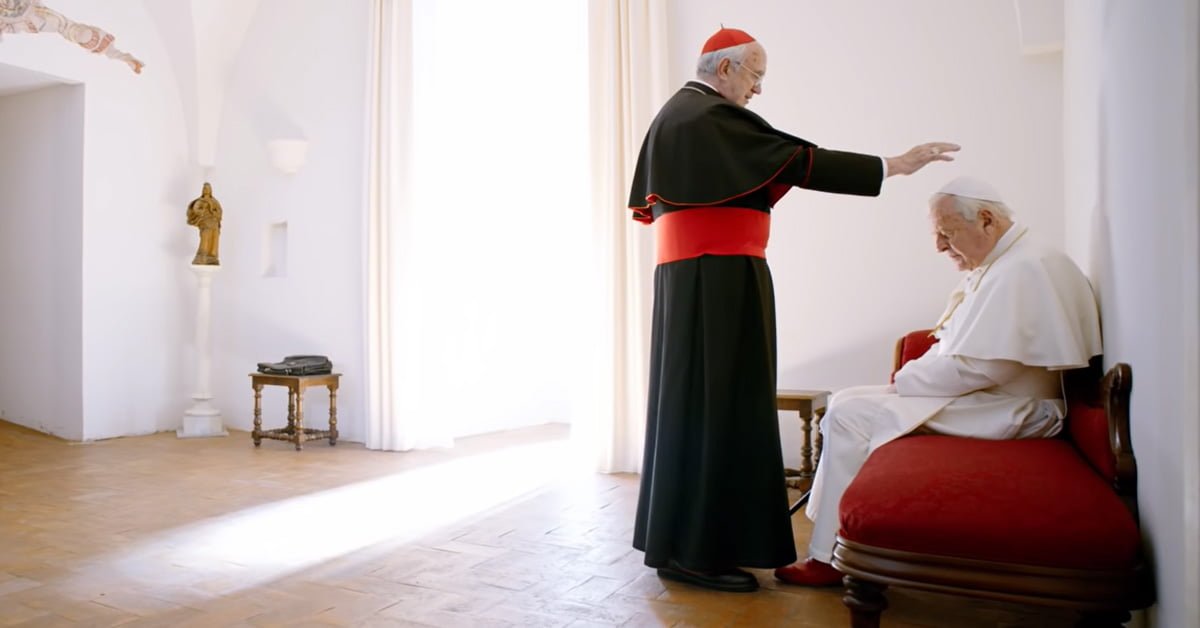
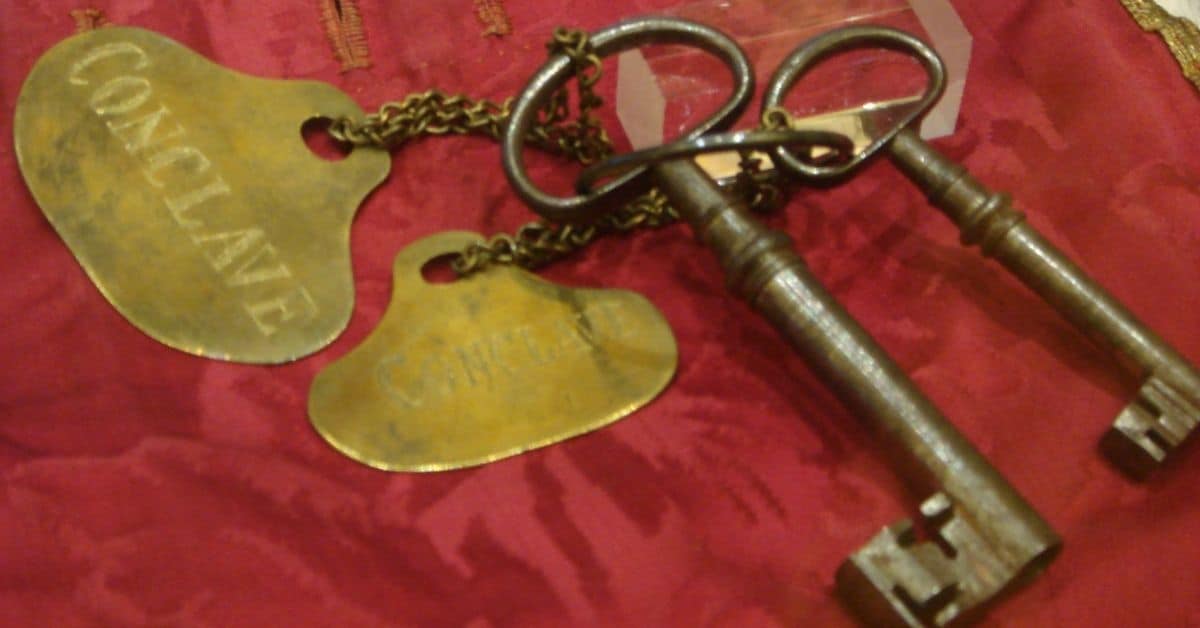
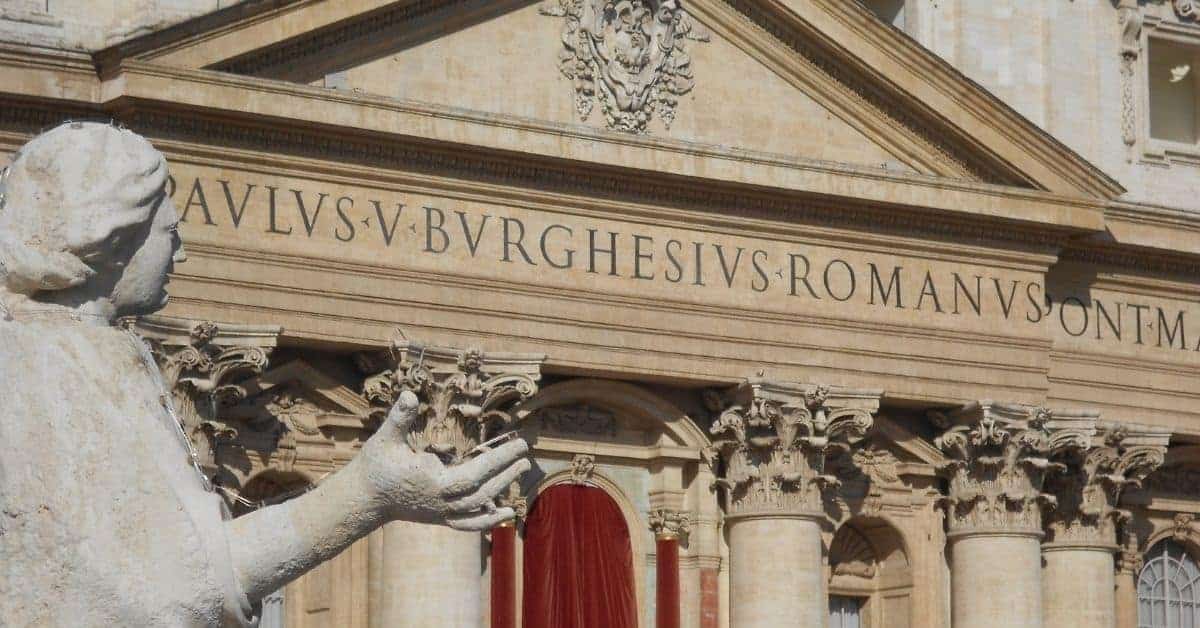
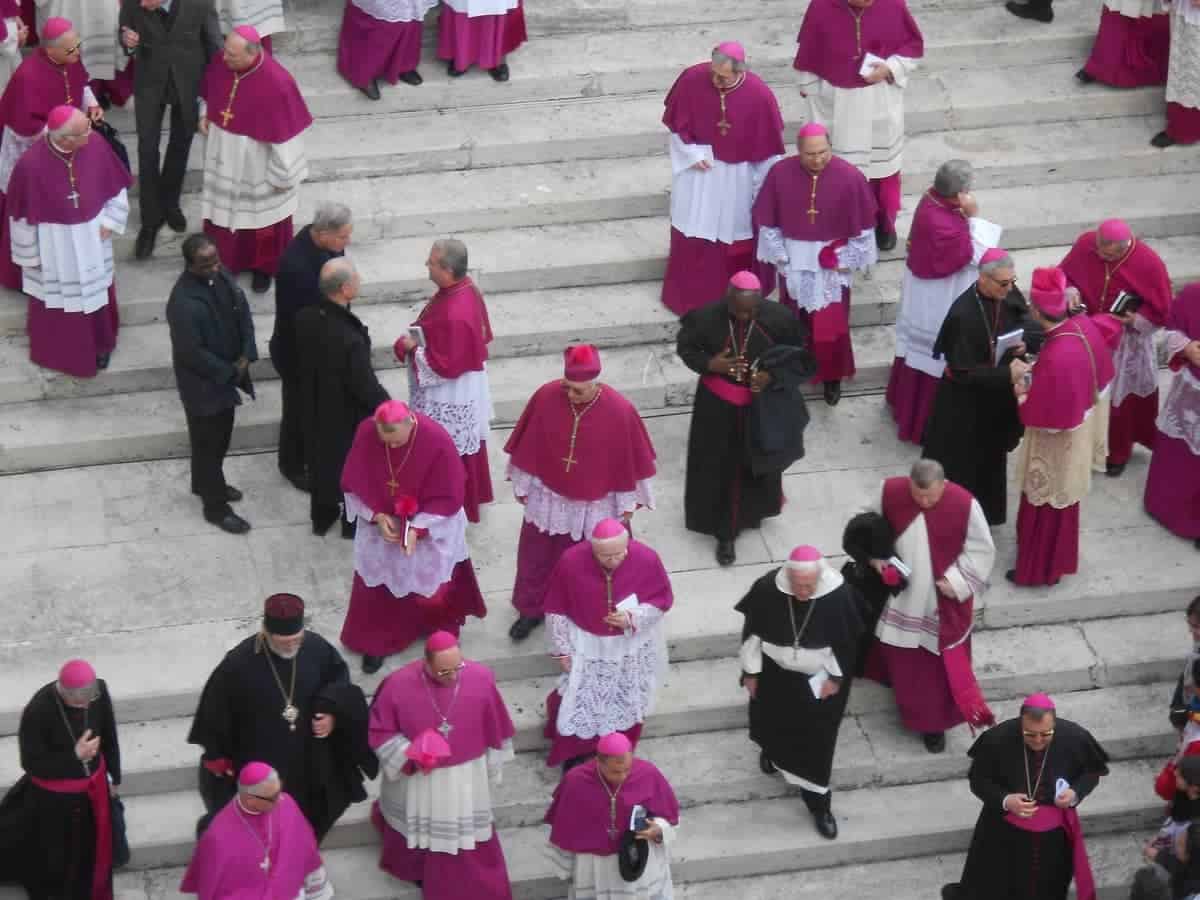
Cardinal Gibbons of Baltimore made it in time to vote in the 1903 conclave
Cardinal Farley of New York made it over quick enough to vote in the 1914 Conclave while Gibbons and O’Connell (Boston)were not able to.
How interesting, thanks.
Scrolling through ‘The Life of James Cardinal Gibbons’ by John Tracy Ellis (https://penelope.uchicago.edu/Thayer/E/Gazetteer/People/James_Gibbons/ELLxLCG/6*.html)
I read that Gibbons was rather eager to witness the conclave, shall we say:
“On July 8 Gibbons received a cablegram from Rampolla that the Pope was not expected to live, and at this news the cardinal quickly made arrangements. They landed at Le Havre on July 16 and proceeded to Paris. Leo XIII died on July 20, and the cardinal then set out for Rome where he was to have the distinction of being the first American to take part in the election of a pope.”
Or maybe Rampolla (the papabile with the most chances) also wanted to secure the American vote.
Enjoyed the article very much. Just to note that a cardinal from the USA voted in every election in the 20th Century (including 1903 and 1914) except for 1922. Many did, however, “miss the boat,” and arrived too late in both the 19th and 20th century!
Hi John, Who was this US cardinal you mention and how did he manage to arrive in time in Rome (did he have a curial appointment?)?